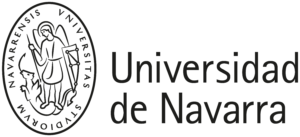WORKPLAN
X-PAND project is proposing to develop a toolbox of innovative genetic engineering technologies applied to hematopoietic stem cells (HSC) in the context of an ex-vivo expansion and multiomics analysis platform, as an accelerator for product optimization, validation and characterization. In order to achieve this goal, X-PAND consists of 8 Work Packages, of which the first three are aimed to find the best culture conditions to expand, genetically correct and characterize HSC. In particular, the WP1 is focused on ex-vivo HSC expansion coupled to lentiviral transduction and gene editing, the WP2 on the in vitro identification of genetically-engineered HSC using single cell multiomics approaches, the WP3 on the genomic, epigenetic and functional consequences of gene editing in terms of safety and HSC biology. As a complementary WP, the WP4 is focused on the implementation of the comprehensive product optimization platform to develop innovative therapies for the inherited bone marrow failure syndromes and cancer towards translation. The WP5 is the collector of all results obtained in previous scientific WPs, in particular it is focused on bioinformatic data collection, integration and analysis including machine-learning and artificial intelligence. The last three WPs (WP6, WP7 and WP8) are dedicated to project management and management of project results, as well as the portfolio activities, binding all other work packages together.

ENHANCING THE SCOPE OF GENE ADDITION
AND GENE EDITING WITH TRANSLATABLE AND SUSTAINABLE EX VIVO HSC EXPANSION
Leaders
Luigi Naldini, Bernhard Gentner

The first action of WP1 will be the setup of the best protocol for HSC ex vivo expansion culture. These cultural conditions will be combined with protocols of lentiviral vector transduction and gene editing to fine tune the best procedure minimizing the impact on HSC while efficiently editing their genome. These procedures will be instrumental to introduce barcoding sequences to analyse HSC at single cell level in the following WPs. Lastly base-editing and prime-editing technologies optimized for the expansion culture will be setup.
SPECIFIC OBJECTIVES
- Set up a standardized, sustainable and clinically-translatable expansion protocol focused on HSC.
- Identify optimal timing for lentiviral transduction and different editing strategies to maximize (i) genetic engineering efficiency and (ii) the number of engrafting cells.
- Successfully use enhancer molecules that increase the number of engineered repopulating cells. 4. Provide the conditions for in vitro multiomics HSC readouts developed under WP2.

NOVEL IN VITRO MULTIOMIC APPROACHES TO REPLACE IN VIVO ANIMAL MODELS
Leader
Felipe Prosper

Single cell analysis of the genome, transcriptome and chromatin will be assessed to develop reproducible and regulatory-applicable in vitro approaches capable of predicting functional attributes and engineering efficacy of transduced/edited HSCs. This forms a basis for alternative approaches to reduce and finally replace animal studies required for development and approval of clinical hematopoietic gene therapy trials.
SPECIFIC OBJECTIVES
- Identify and quantify primitive HSCs in culture by single cell multiomics analyses.
- Detect stable gene transfer/editing in primitive HSC at single cell level.
- Demonstrate the self-renewal capacity and multilineage differentiation potential of engineered HSC. 4.
Correlate the above readouts with standard transplantation assays to reduce/replace animal experiments.

GENOME AND EPIGENOME INTEGRITY AND HSC RESPONSE TO EDITING
Leaders
Toni Cathomen, Raffaella Di Micco


In WP3, we will assess the impact of distinct CRISPR-based platforms (CRISPR-Cas nucleases, base editors, prime editors), DNA lesions and repair events (NHEJ and HDR upon nuclease-induced DSB and DNA repair template delivery by AAV6 viral vectors or DSB-free prime and base editors) on integrity of the genome and/or epigenome. This set of investigations will assess whether genetic engineering in expanded human HSCs occurs at the cost of premature exhaustion and long-term safety.
SPECIFIC OBJECTIVES
- Establish a robust pipeline for unbiased, genome-wide identification of ON and OFF-target effects triggered by the various genome editing strategies upon ex vivo expansion.
- Establish a robust assay to uncover expansion/dominance of clones carrying gain-of-function mutations in the progeny of HSCs edited according to the standard protocol or upon ex vivo expansion.
- Characterize adverse cellular responses to the various genome editing strategies in expanded HSCs.
- Identify novel small molecules and peptides to counteract adverse cellular responses for improved genome editing outcomes in human HSCs.
